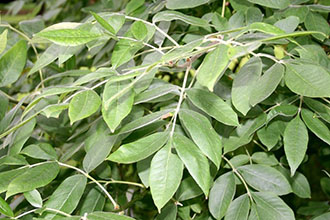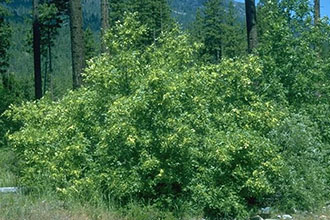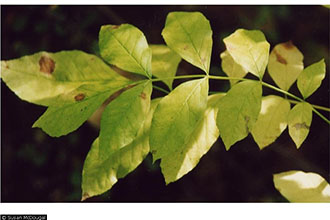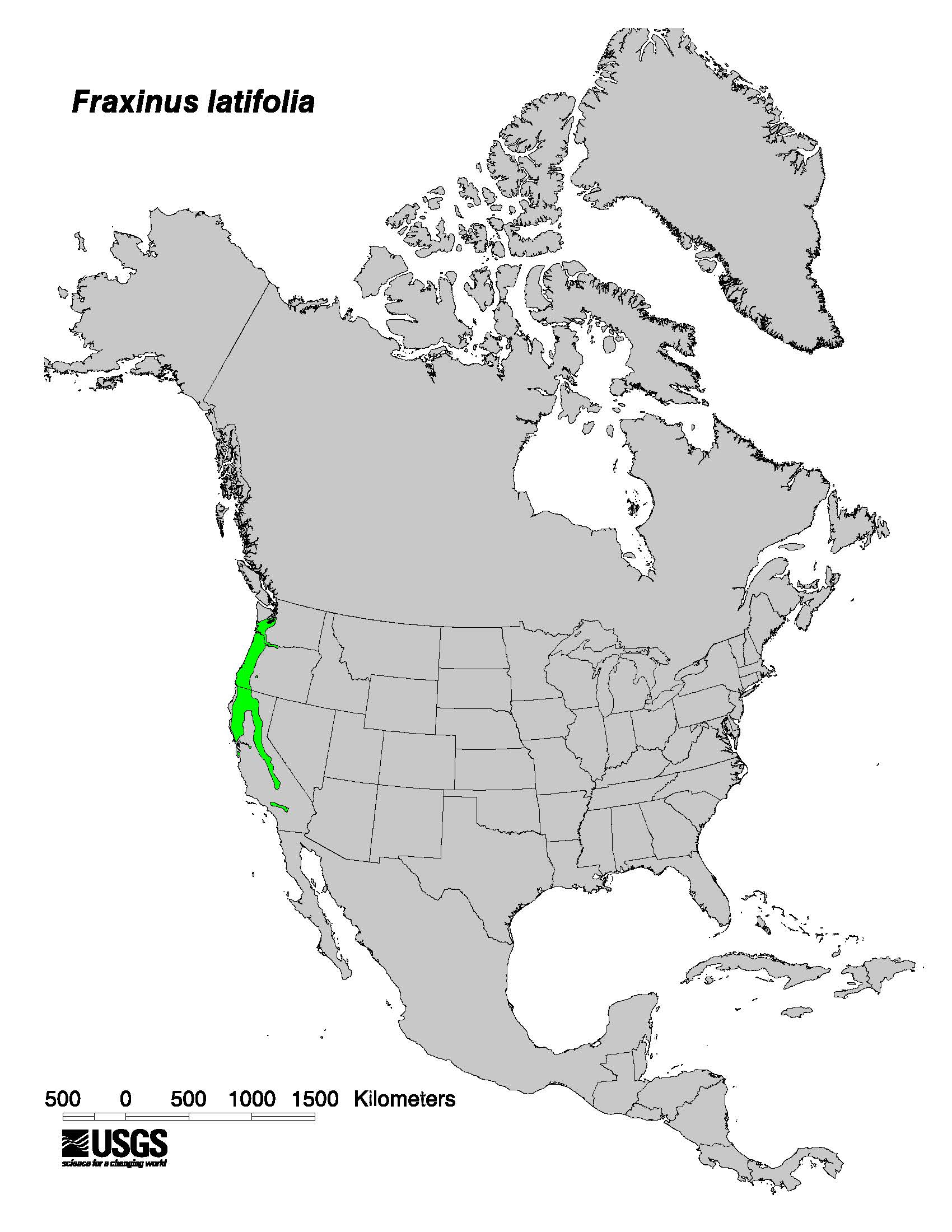Taxonomy: Kingdom - Plantae (plants). Subkingdom - Tracheobionta (vascular plants). Superdivision - Spermatophyta (seed plants). Division - Magnoliophyta (flowering plants). Class - Magnoliopsida (dicotyledons). Subclass - Asteridae. Order - Scrophulariales. Family - Oleaceae (olive). Genus - Fraxinus L. (ash). Species - Fraxinus latifolia Benth (oregon ash).
Ecology: Oregon ash (Fraxinus latifolia) is the only native species of Fraxinus in the Pacific Northwest. It is commonly found in riparian habitats and is not managed for timber production. This tree may reach the age of 250 years and is fast growing the first third of those years, then grows slowly. The seeds are eaten by birds and squirrels. The wood is most used as fuelwood. Although Oregon ash is sometimes found growing as high as 1520 m (5,000 ft) in elevation, it usually does not occur higher than 910 m (3,000 ft). Its preferred habitat is poorly drained, moist bottom land with deep soil rich in humus (fig. 2). In the central Willamette Valley of western Oregon, it is most commonly found on sites with silty clay loams and clays. The species also grows in sandy soils or moist, rocky, gravelly soils. It often follows streams and swamps in ribbonlike fringes and is characteristic in seasonally flooded habitats. Oregon ash is also found on adjacent forest sites at higher elevations, in old fields, and along roads. It grows on Alfisols, Inceptisols, Mollisols, and Ultisols.



